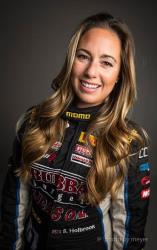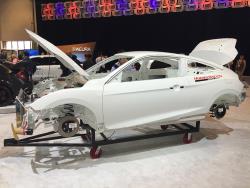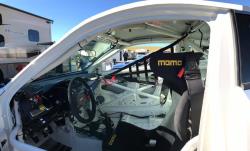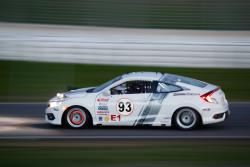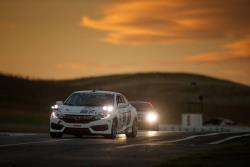Q&A With K&N Racer Shea Holbrook and Her Adventures at the 25 Hours of Thunderhill
- Dec 12, 2016
While there are still club racers competing, it’s the factory-backed efforts that are leading the field. In 2016, the Flying Lizards team, which has competed in the 24 Hours of Le Mans three times, won the Thunderhill 25 for the second year in row in an Audi R8 LMS. The Lizards covered 751 laps with a fastest lap of 104.641. K&N-supported racer Shea Holbrook was invited to park her K&N equipped Pirelli World Challenge Honda Accord Touring Car and join the Honda Performance Development team at the Thunderhill 25 Hours. We sat down with the 11 time World Challenge race winner after the event and here’s what she had to say:
Shea: We raced the all-new 2017 Honda Civic Coupe Turbo at Thunderhill, which weighed just 2,200 pounds, largely because it was built from Honda Racing/HPD's new body in white. You can't really compare the Accord to the new Civic based on wheelbase, power-to-weight ratio and the "how you drive application" is significantly different. The Accord has so much power and much heavier. It's difficult to drive that car at 10/10 all the time. The new Civic has a great balance and is more of a momentum car. Also, we need to take into consideration that we ran the 25 Hour car lighter than we normally would in PWC TCA because the 25 Hour was a true development test. K&N: Who did you share the car with?
K&N: How much seat time do you get on a typical PWC weekend? How much seat time at the 25? How did you handle all the extra driving? Shea: For World Challenge we typically have an hour for the promoter test day, about an hour of official practice, 15 minutes for qualifying and two 60 minute races. So, call it just over 4 hours of total on track time. Whereas at the 25 Hour we get two full days of open track testing then the 25 hour race itself. But that's also divided up between four drivers. I drove 7 1/2 hours of the 25 and the grueling 2:00 am to 5:30 am stint. I love the extra time on track, especially night stints. K&N: Speaking about racing at night, I would imagine it presents some special challenges to the driver
K&N: Have you raced at night before? Shea: I raced the 25 Hours in 2008 but that felt like a lifetime ago. So, I do not have much night driving under my belt, although, I ran some of my fast laps at night. Maybe because you can't see and just hope for the best, haha! The biggest challenges were the high-speed, blind, very dark corners. If you're the only car going through it's just your headlights lighting up that part of the track. Plus, we had an incident at 10:30 pm which took out our right side lights. It made the rest of the night driving, interesting at times.
Shea: Staying hydrated and properly fueled up is important. We snack, a lot. Light eating is uber import. Don't eat waffles right before you get in the car, ask one of the HPD engineers! Hydration, energy, sleep, and mental focus are must haves for a grueling race like this one. K&N: So are you happy with the outcome of the 25 Hours? Shea: Our 2017 Honda Racing/HPD Civic finished the 25 Hours of Thunderhill! Not a single mechanical failure, I’m always impressed with the Honda brand. Completely flawless thanks to the extensive development HPD put in. We were the fastest front wheel drive car and the third fastest car in our class. Thank you to the crew, my co-drivers, Eibach, MOMO Motorsport, Replay XD and HPD for the opportunity! | ||||||
| | ||||||
| ||||||
| | ||||||

